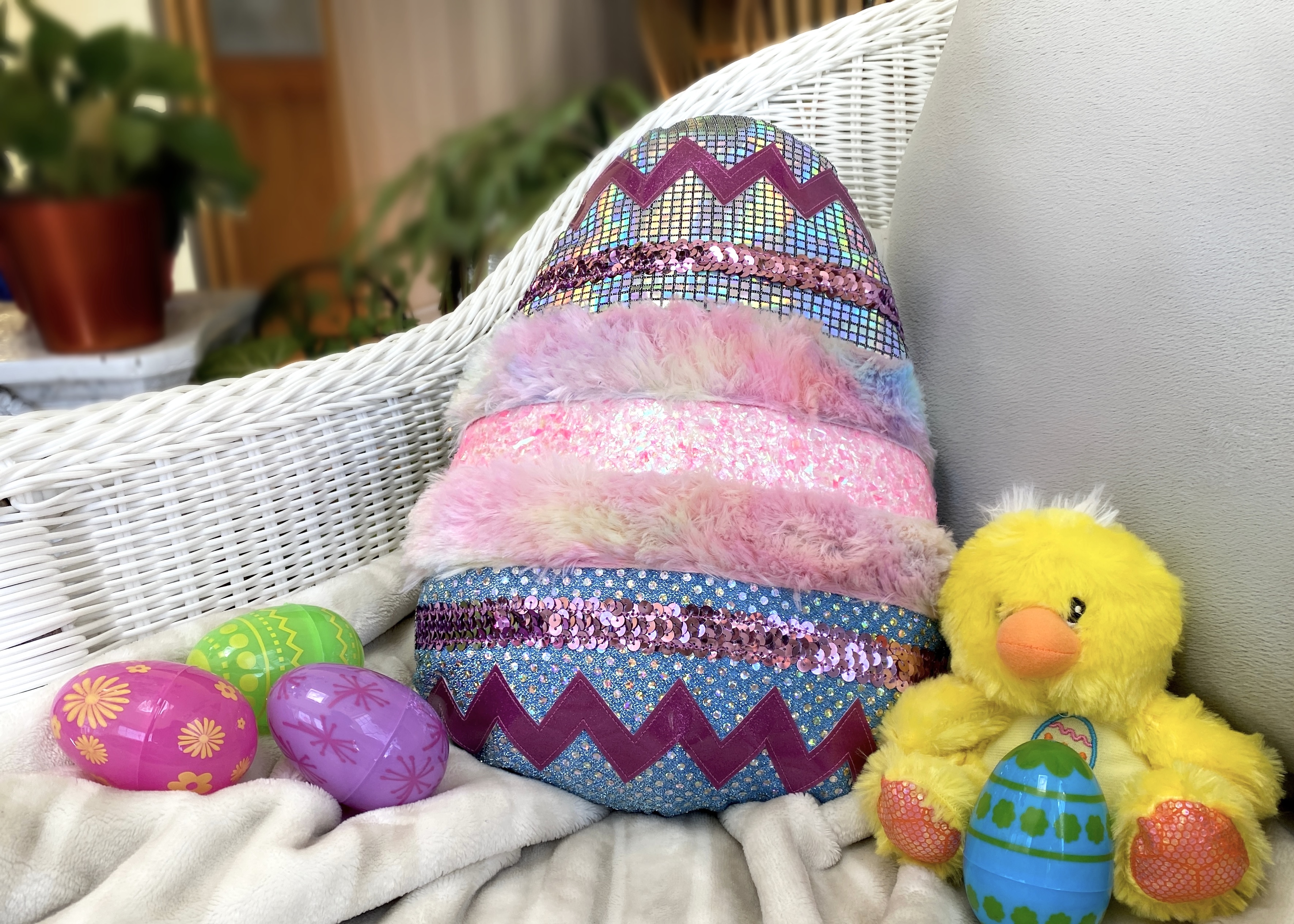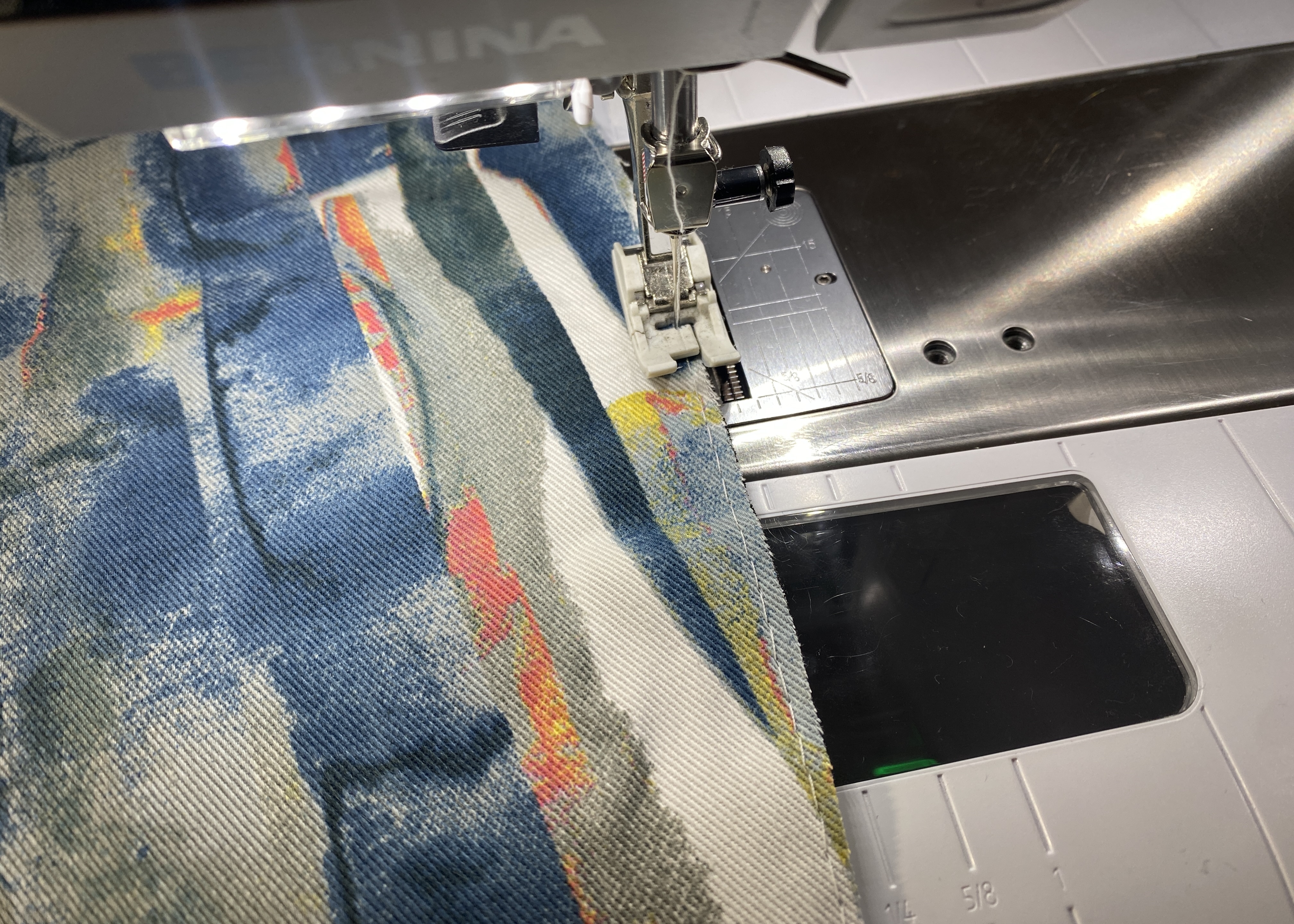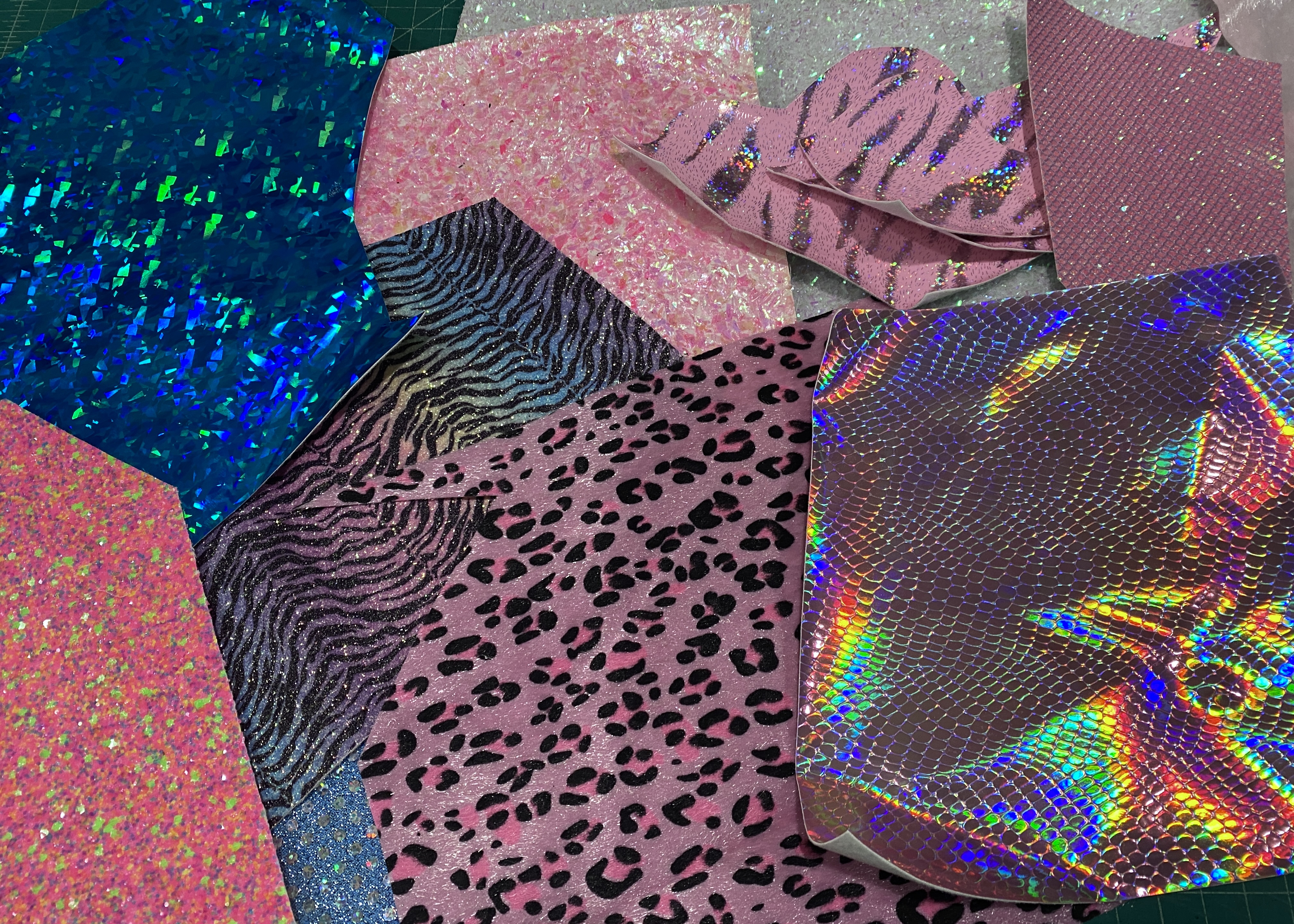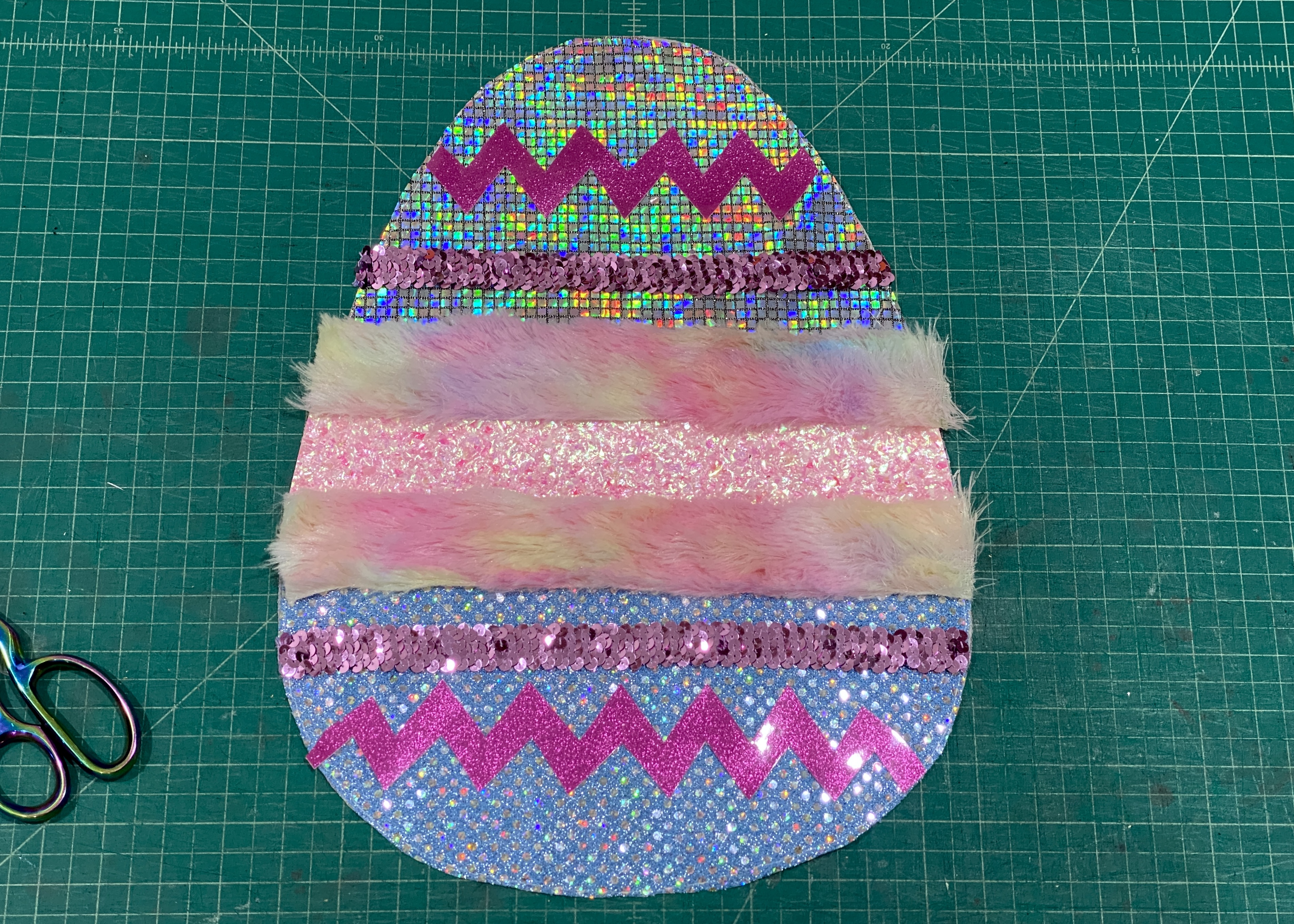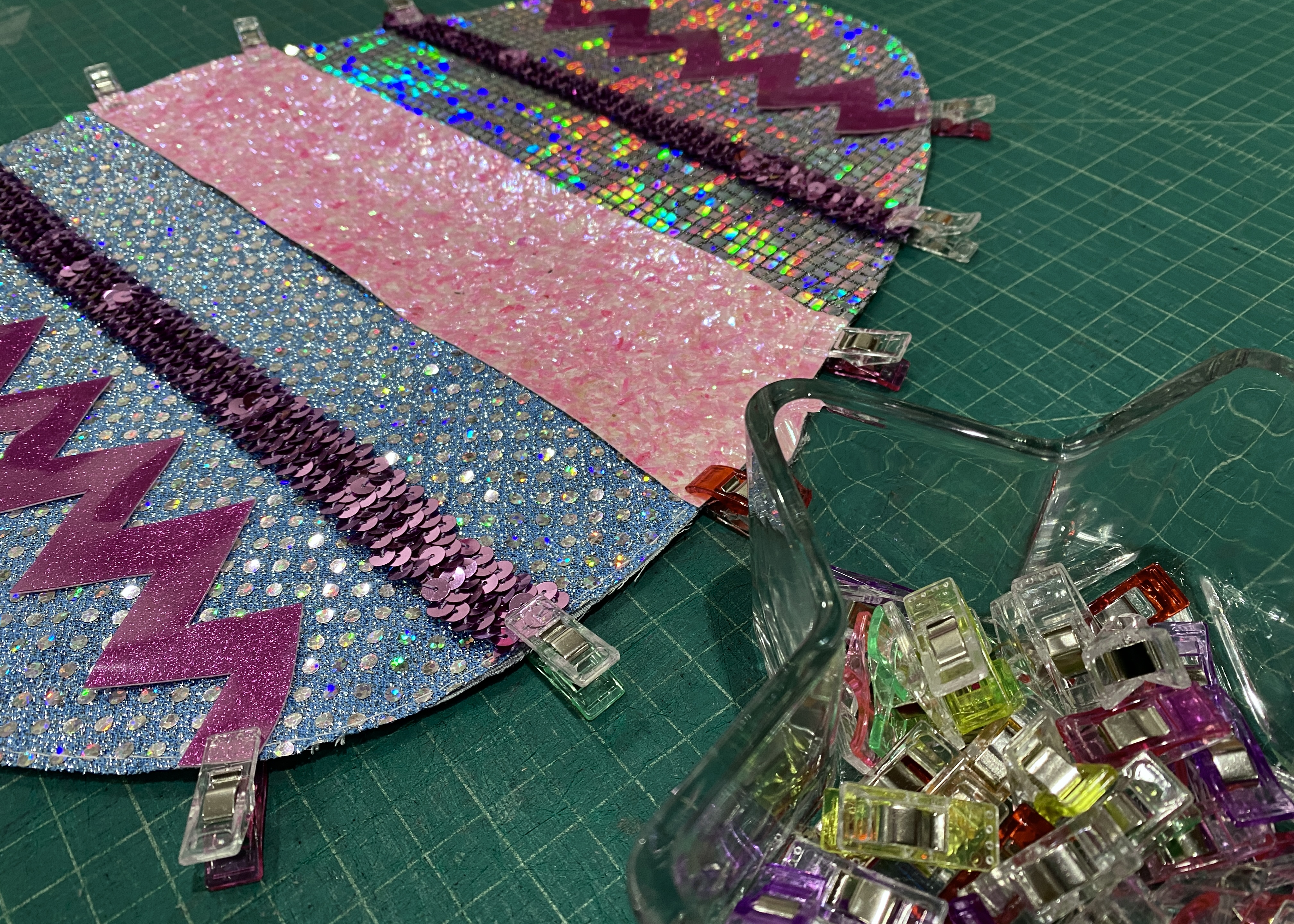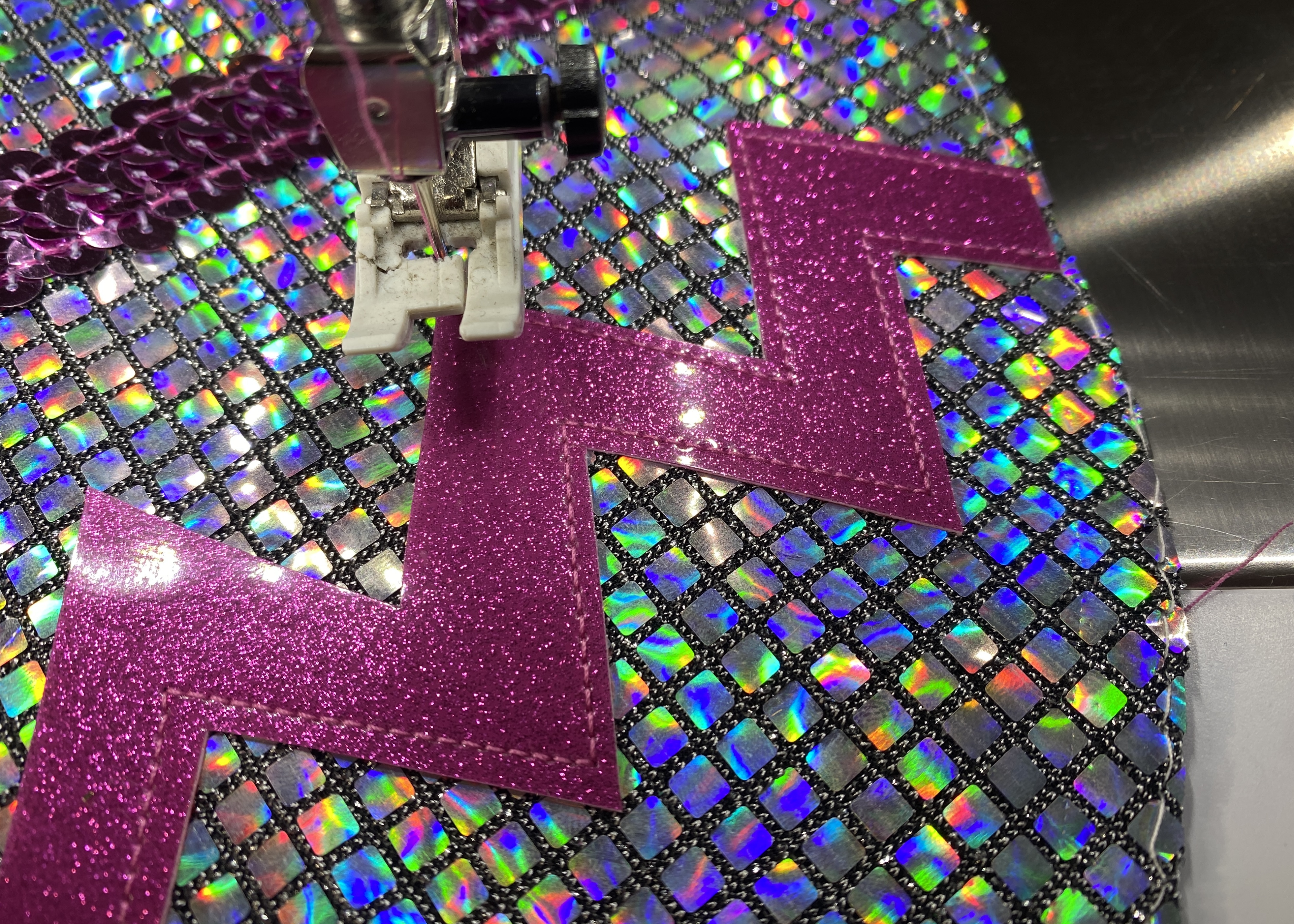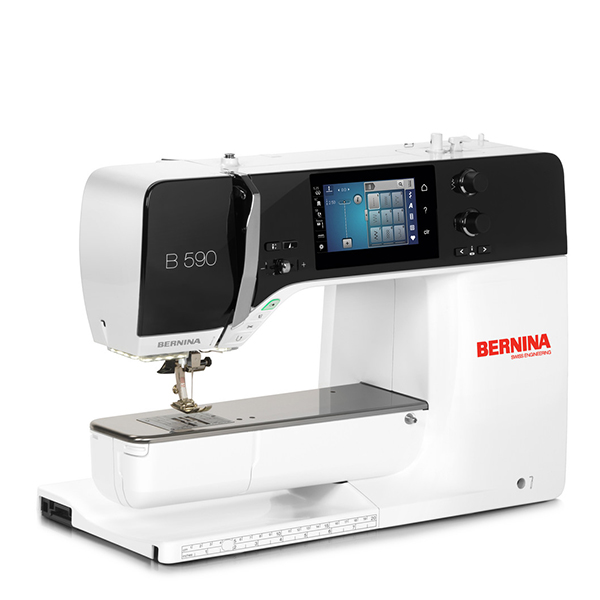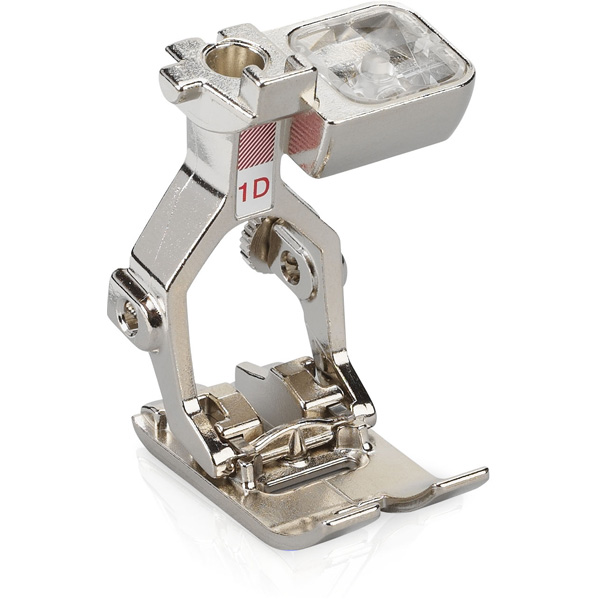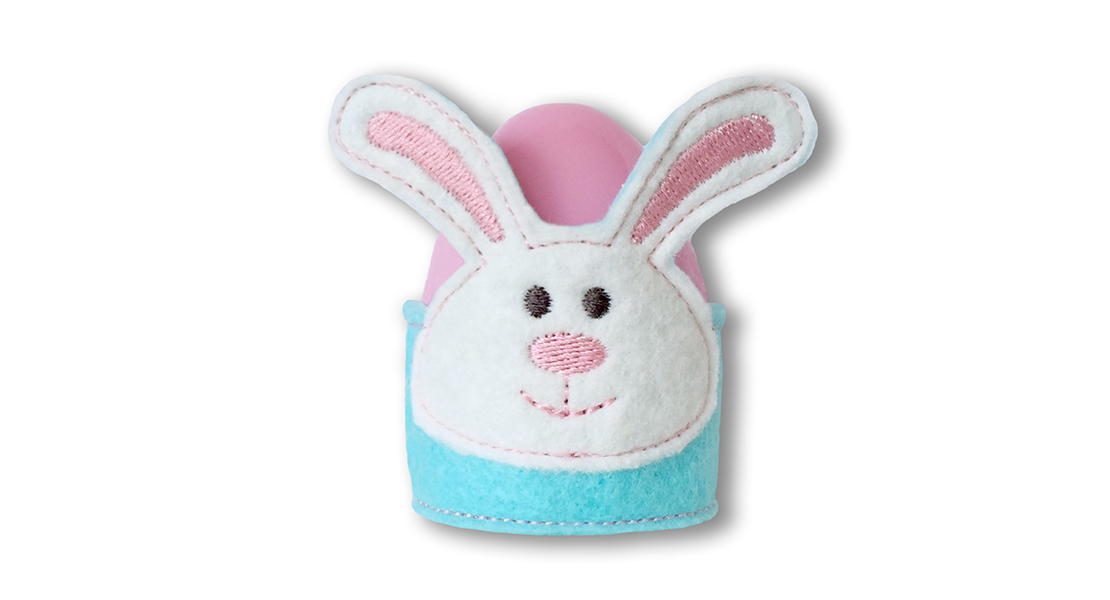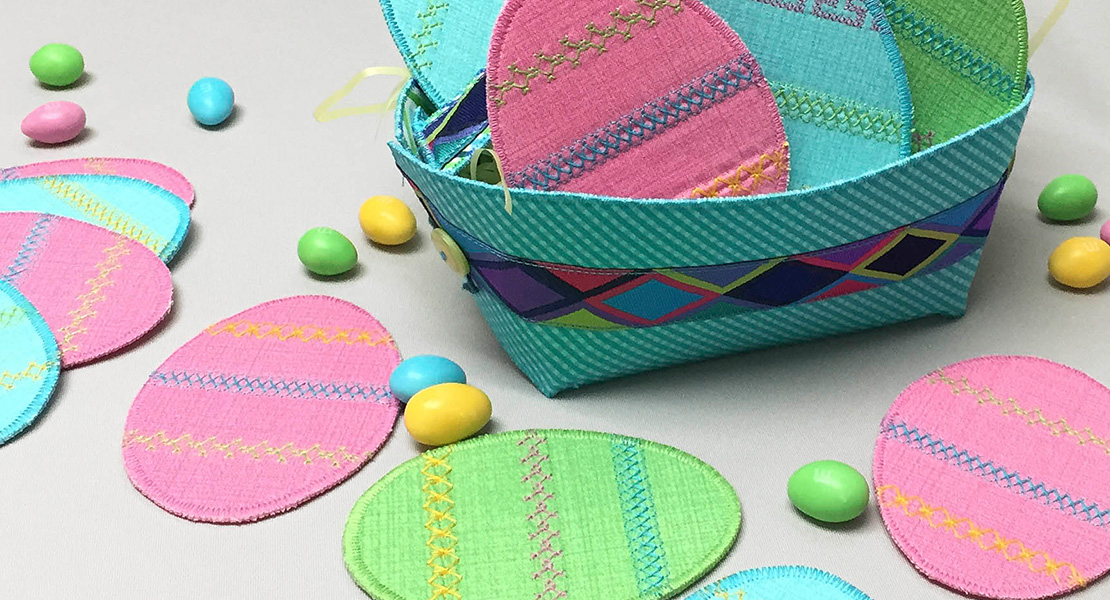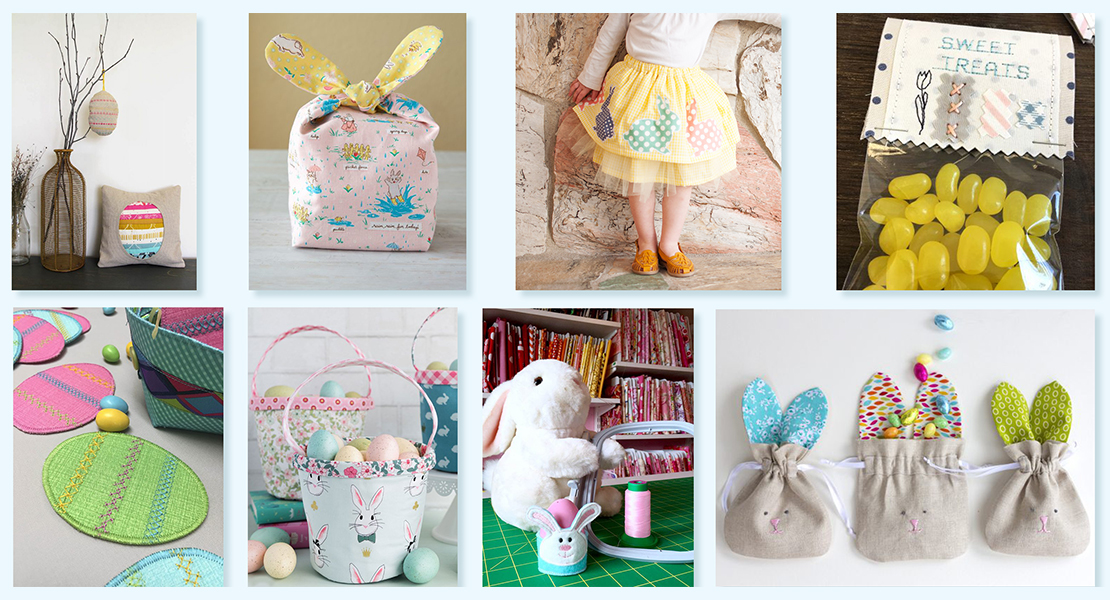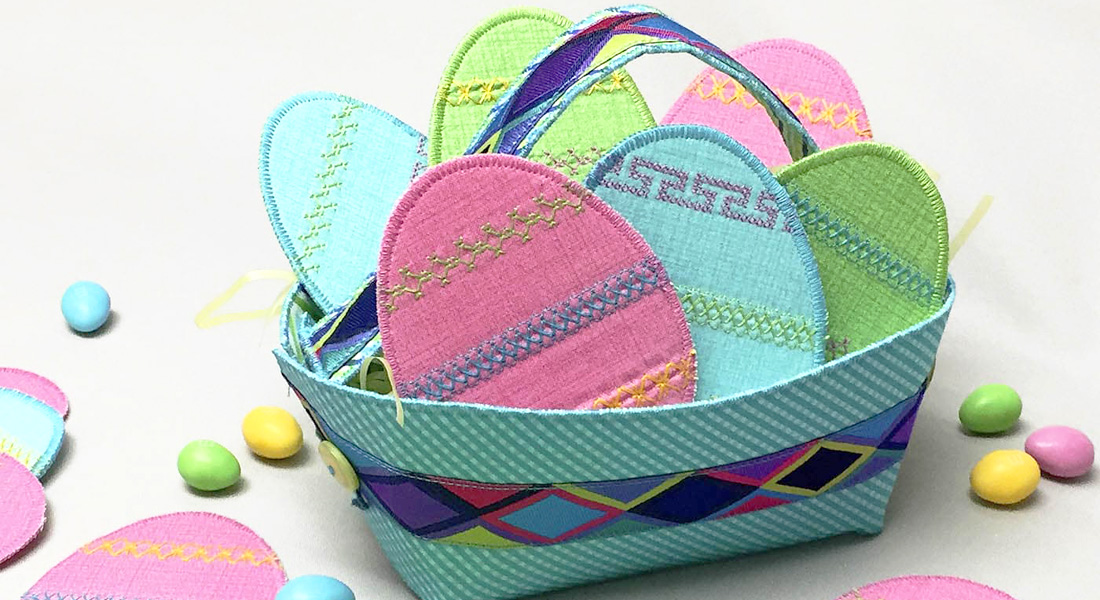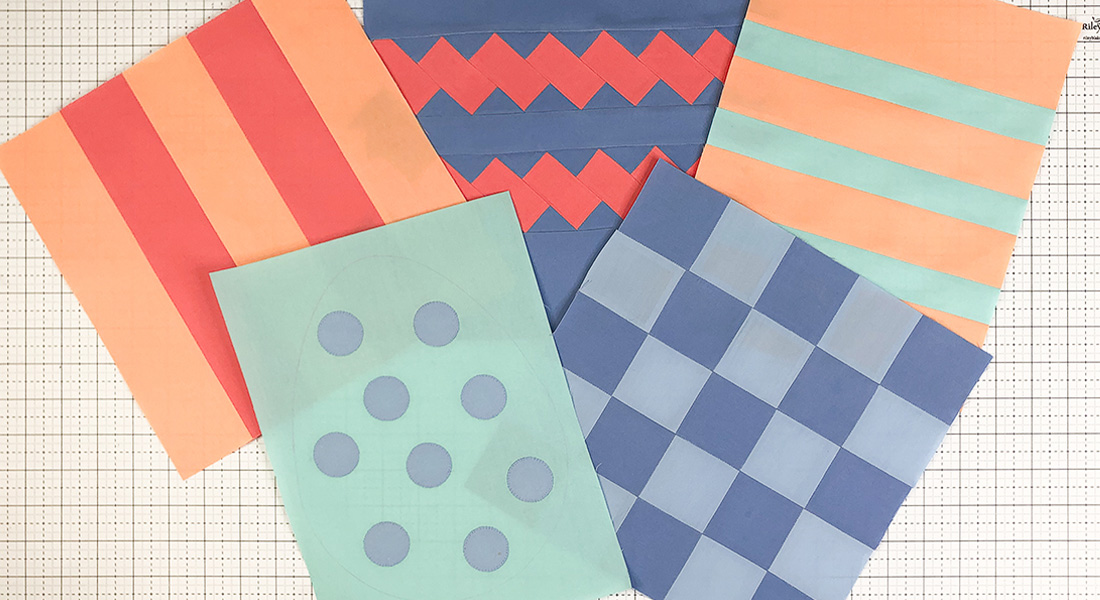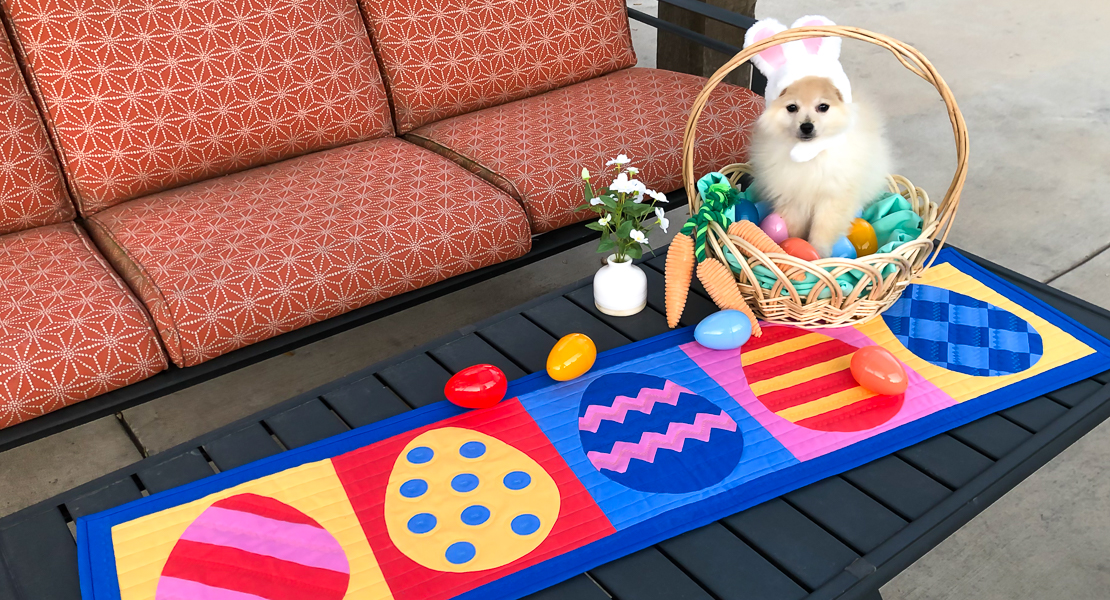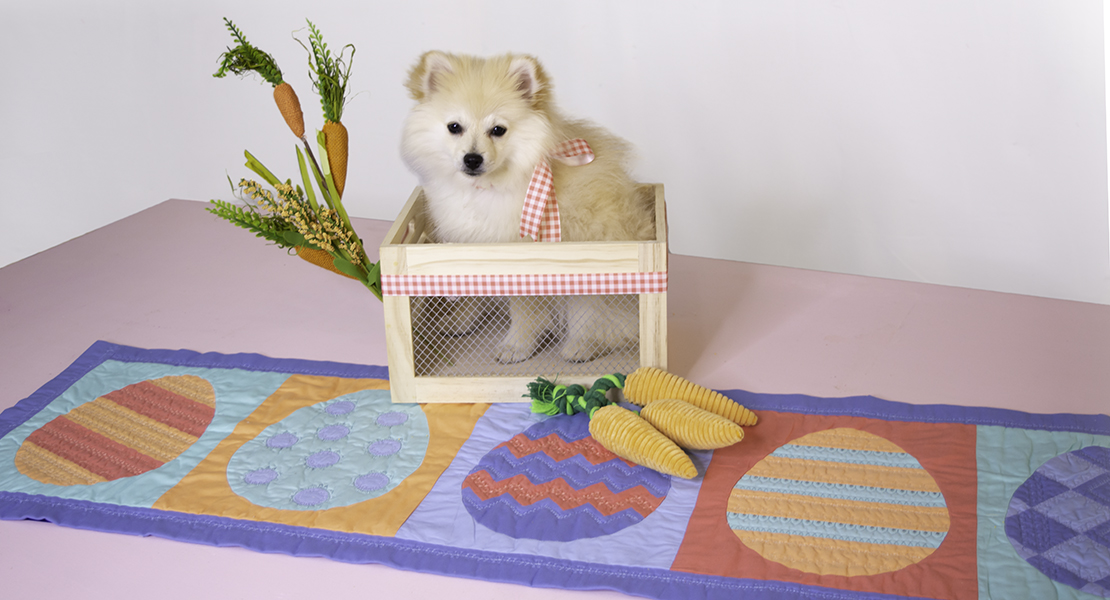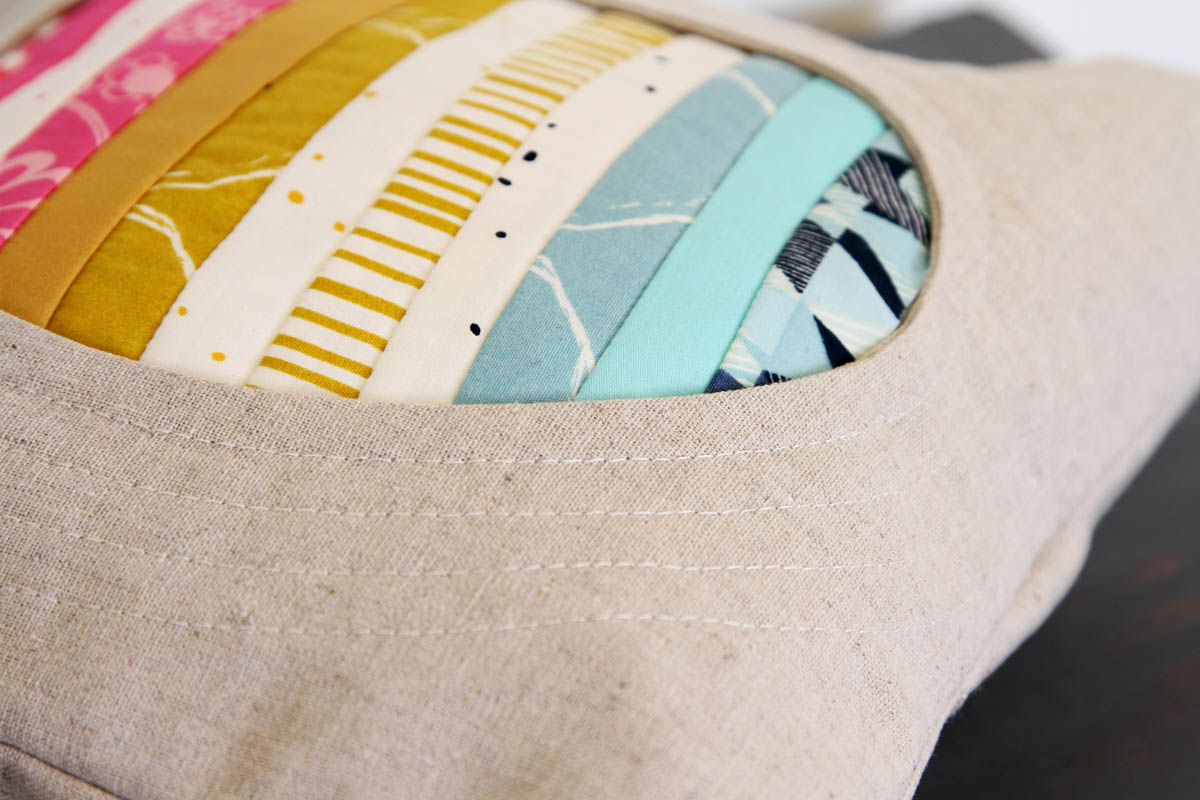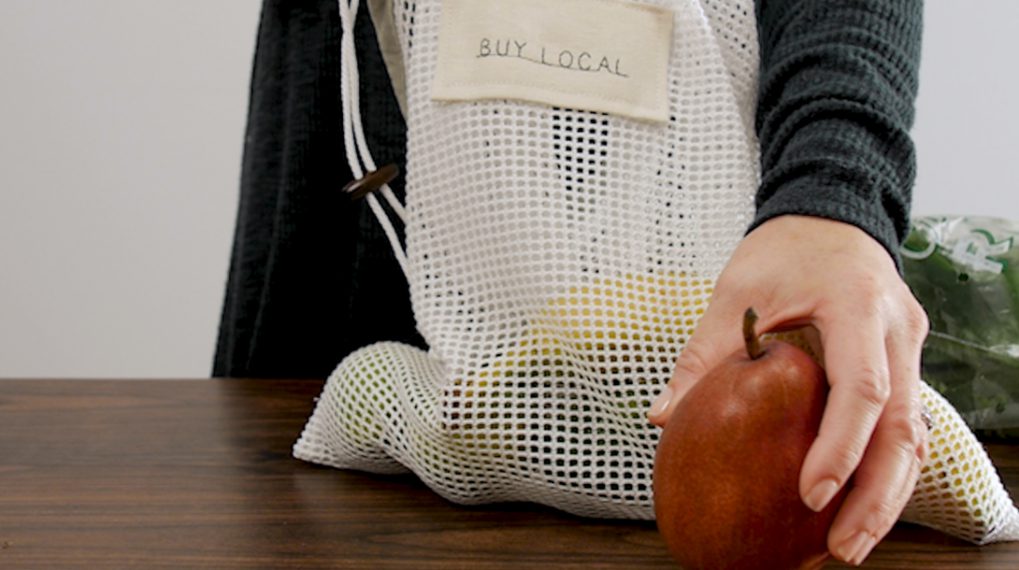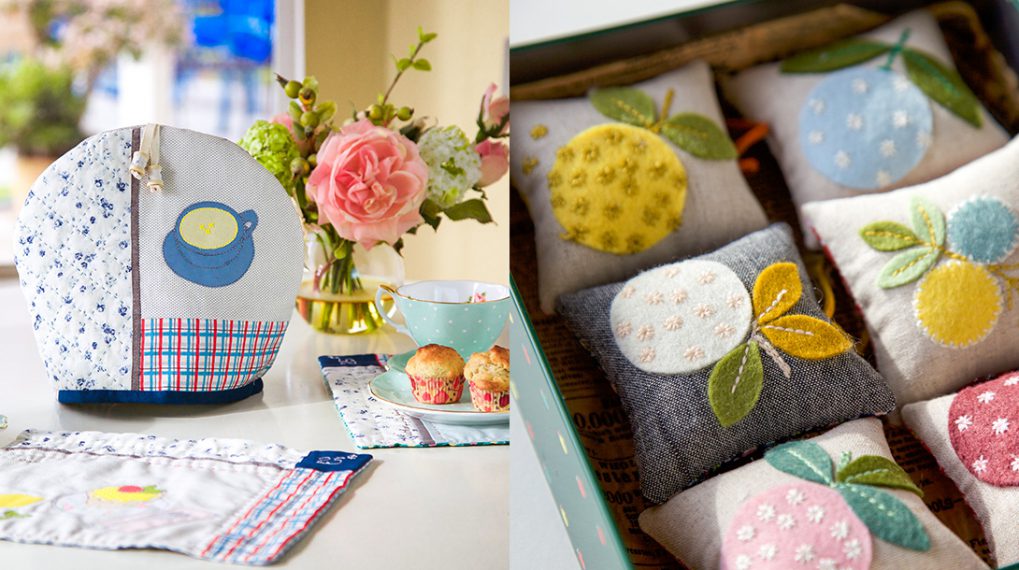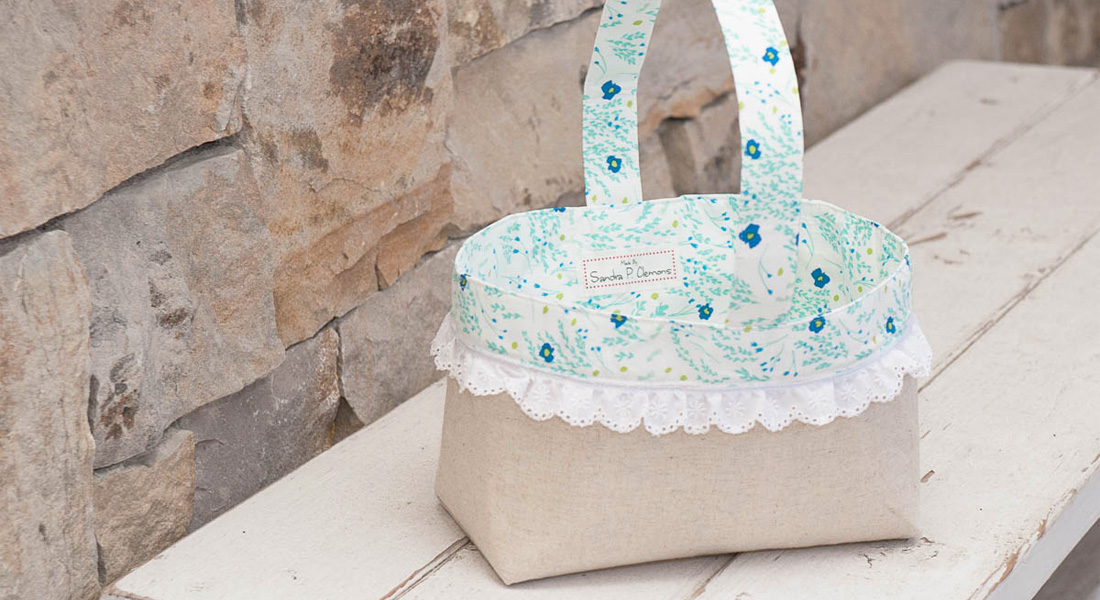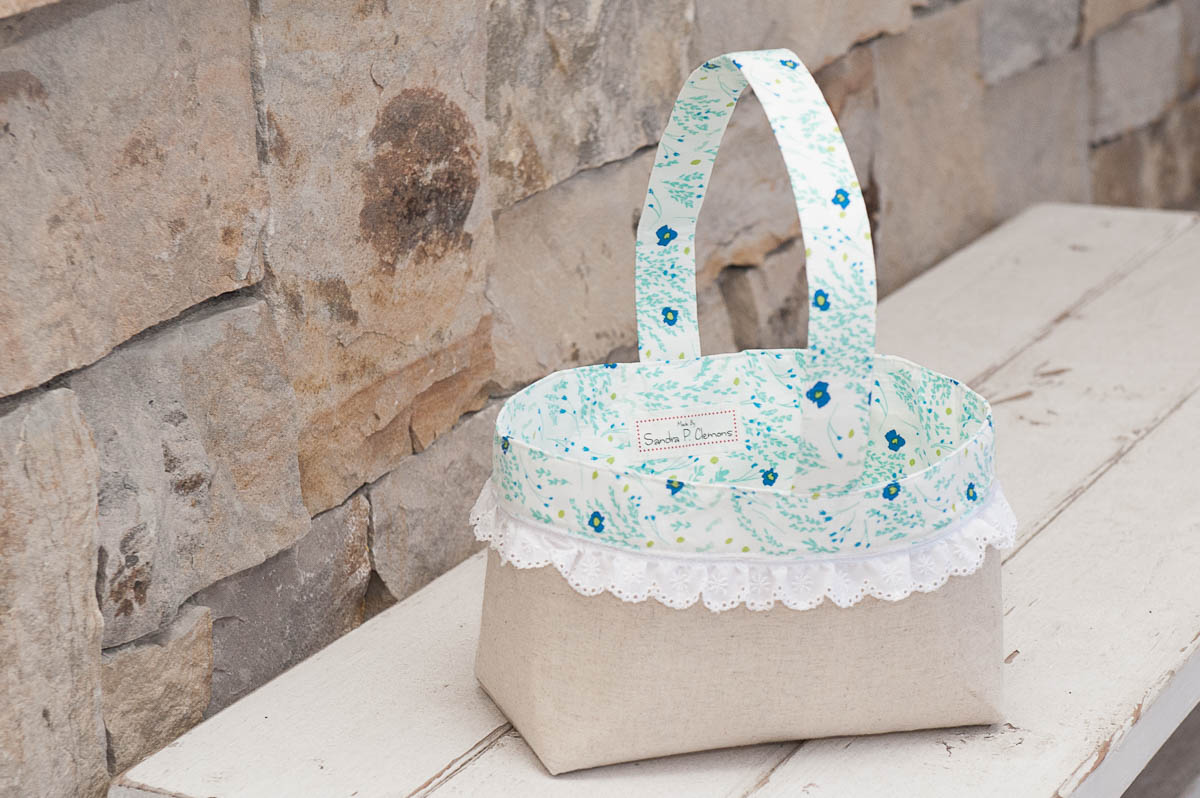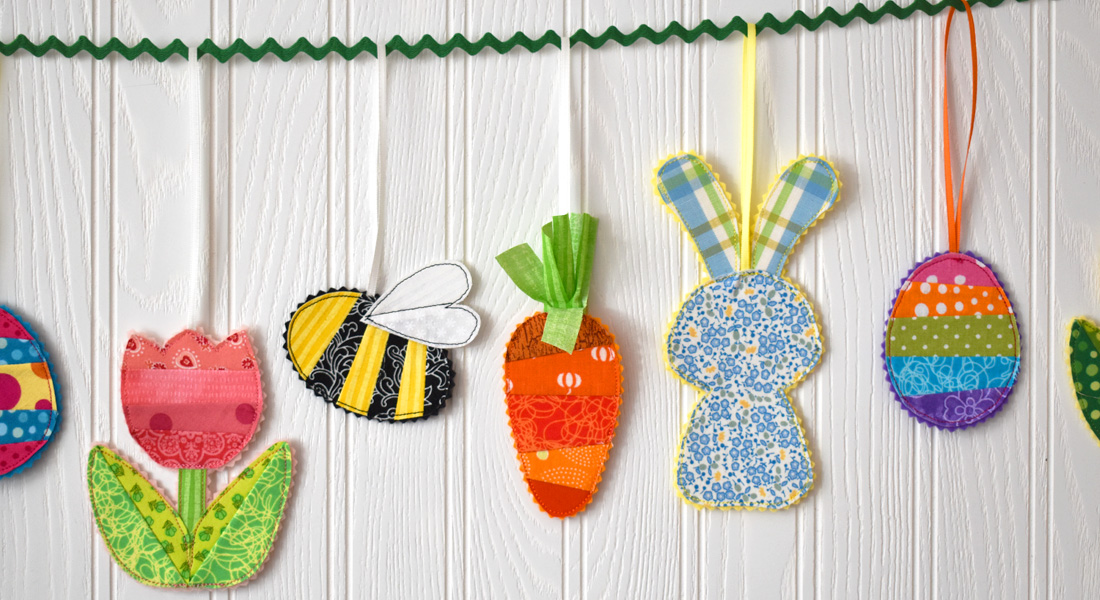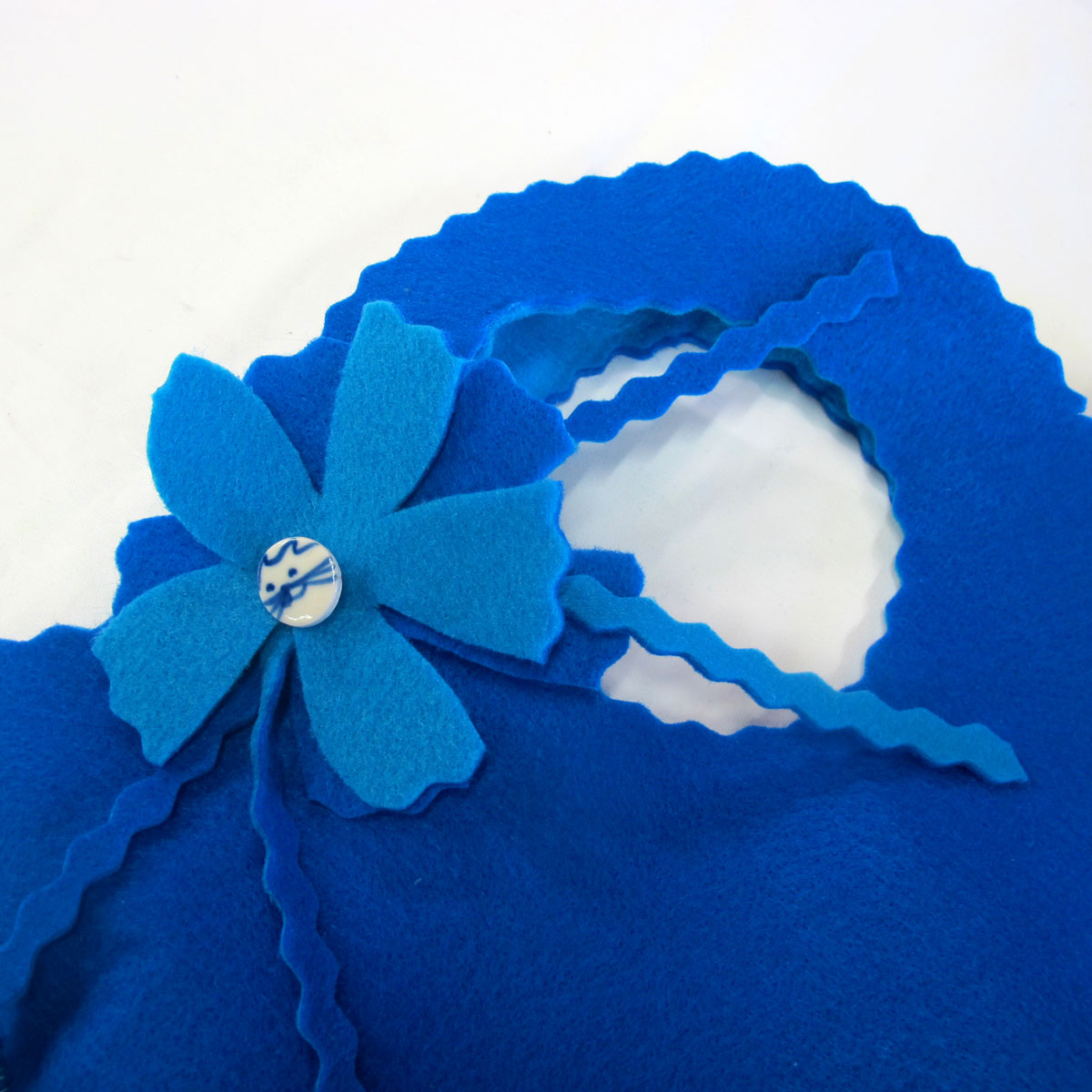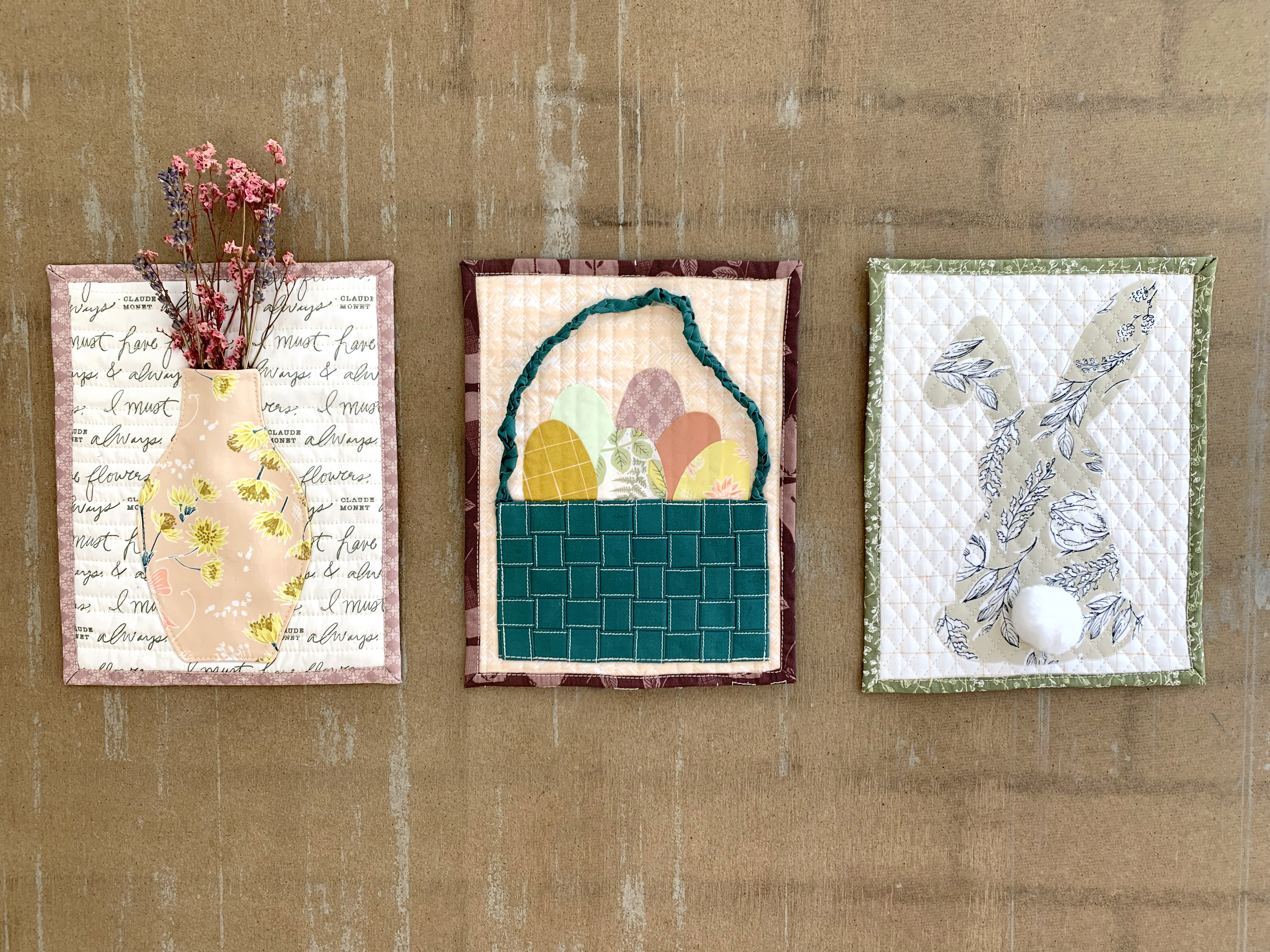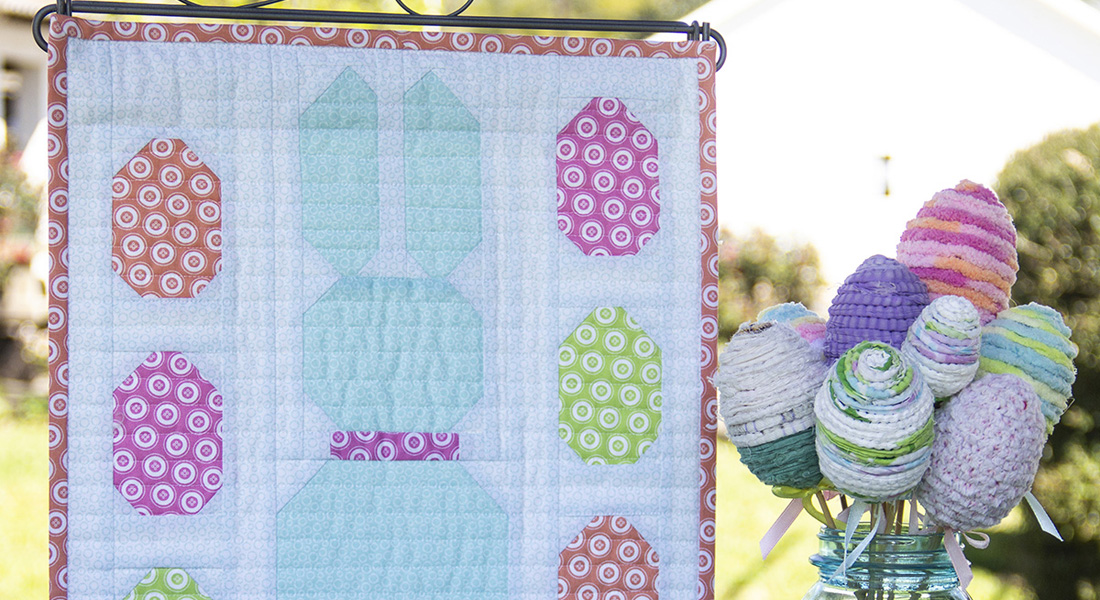Remnant Eco Easter Egg Pillow
Do you have fabric remnants hanging around that you’re not sure what to do with? Let’s hop into the Easter spirit with a burst of color and creativity! Join me in transforming those fabric remnants into a vibrant and playful egg-shaped throw pillow!
Materials to Make a Remnant Eco Easter Egg Pillow
- Sewing machine (I use a BERNINA 590 E)
- Reverse pattern foot #1D
- Zigzag Foot with Non-Stick Sole #52 for vinyls, etc (Recommended but not necessary)
- The fun part: fabric remnants! You’ll need 2 pieces at least 16″ x 16″ for your front and back, and feel free to get creative with your decorating fabric/trim choices. (If you don’t have fabric remnants, thrifting materials is preferred, but any fabric will work.)
- Coordinating thread
To start, you will need a piece of pattern paper or newspaper, at least 16″ x 16″ to draft your ‘egg.’ Aim for a height around height around 15″. I free-handed the shape; essentially, you want to draw a large oval with the bottom slightly wider. Remember to use your paper scissors:)
Voila! Your pattern should look something similar to this. I will be adding 1/2″ seam allowance all the way around in addition to the pattern when cutting my fabric.
Choose a base fabric without any stretch, and remember to include a 1/2″ seam allowance when cutting. You can use any non-stretch base fabric since it will be covered up with different fabric and won’t be visible. Additionally, cut out a second piece for the back using your chosen fabric (I opted for denim). Make sure to include the additional 1/2″ seam allowance on the back piece as well.
You can get creative with this part and choose some fun fabrics to overlay your base material. In this tutorial, I’m only decorating the front of the egg, but feel free to decorate the back as well! I chose two sparkly fabric remnants to create a sort of two-tone look. I didn’t overlay the two sparkle fabrics to sew together, as I’ll have a stripe of vinyl crossing through the middle, so you won’t see the center seam. Once you have your fabrics in place, cut around the edge of the base fabric.
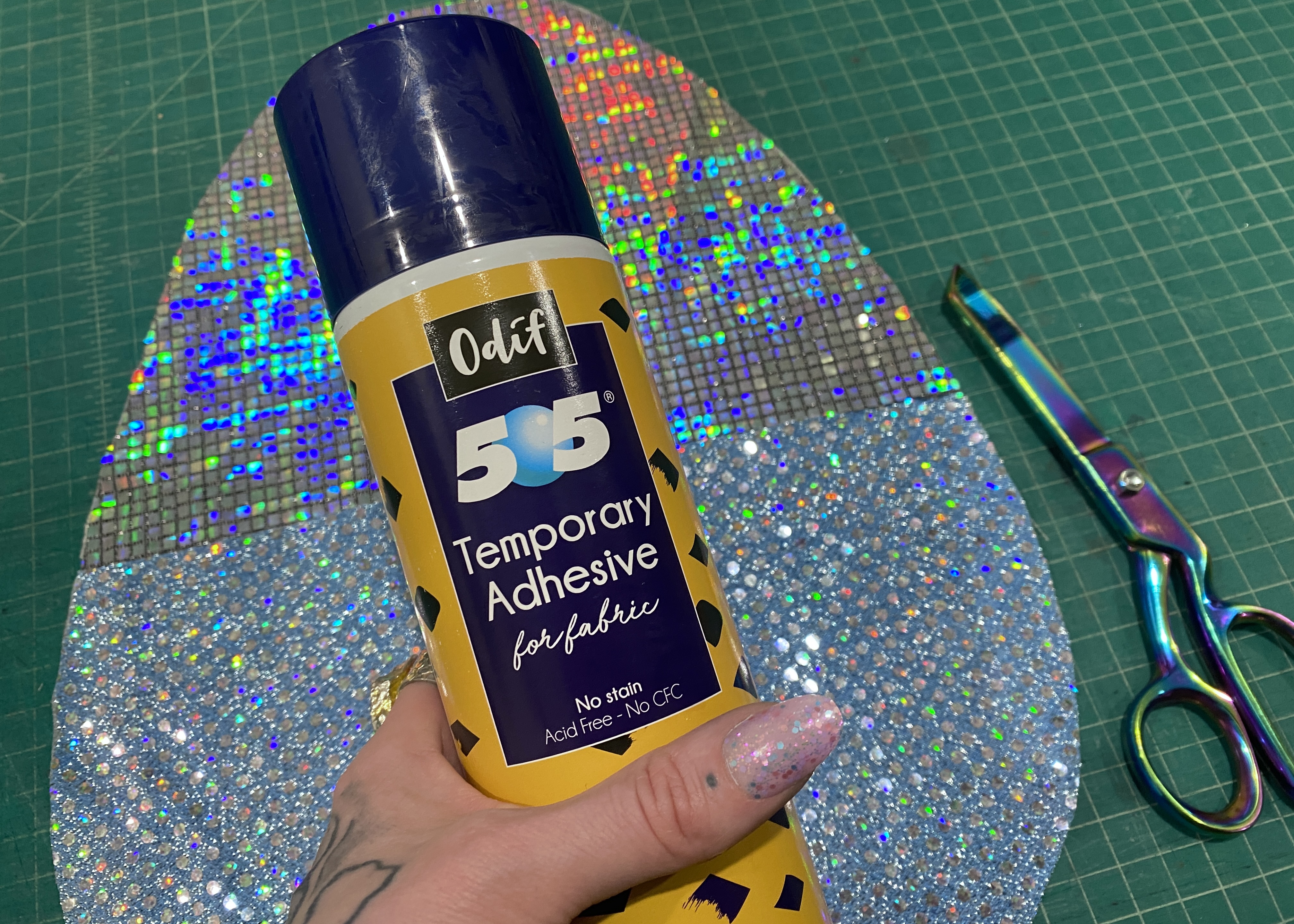
I like to use this temporary adhesive to hold the fabrics in place before sewing them onto the base fabric. You want to sew around each of the fabric edges anywhere between 1/8″ and 1/4″. We’ll eventually be sewing the front and back of the egg together at 1/2″, so you just want to make sure your stitch lines will be hidden by keeping them close to the edges. As previously mentioned, don’t worry about the center horizontal stitch lines as they will be covered with an additional fabric strip.
Helpful tip: If your overlay fabrics have any stretch, like my sparkle ones do, sew them in place with the non-stretch fabric facing up. This will prevent your stretch fabrics from puckering up while sewing. Gamechanger!
Now is when you can let your creative juices flow! I have a ton of vinyl scraps from past projects that I’ve held on to for future use, so these will be perfect for further decorating your egg. Another fun idea is to check out what trims you have available for decoration! If you need inspiration for your egg, you can find a ton of images with a quick search for “decorative Easter egg designs” on Google. Don’t forget, you can also use other fabrics like denim for decorating, but non-stretch is best.
Here is the design I came up with! I incorporated some colorful faux fur trim, sequin trim, and vinyl pieces. I drew zigzags on the back of the vinyl and then cut them out with scissors. The middle strip is also made of vinyl sparkle. Additionally, polka dot designs can be a fun alternative!
I am a big fan of these colorful clips, and they work perfectly for holding these pieces down before sewing them in place. PS: If you have a non-stitch presser foot, now is the time you want to use it 🙂
You want to use coordinating threads to sew your decorative pieces in place. If you are using vinyl or other sticky fabrics, the Zigzag Foot with Non-Stick Sole #52 makes it a breeze!
Next, you want to place your front and back egg pieces right sides together, and clip or pin them together. Then, sew around at a 1/2″ seam allowance. But make sure you leave about 4″ unstitched along the bottom of the egg so you can reach in and flip your egg right side out afterward.
Once you flip your egg right side out, give it a good press before stuffing it with either fabric remnants or, if you’re out of remnants, poly-fil works just as well.
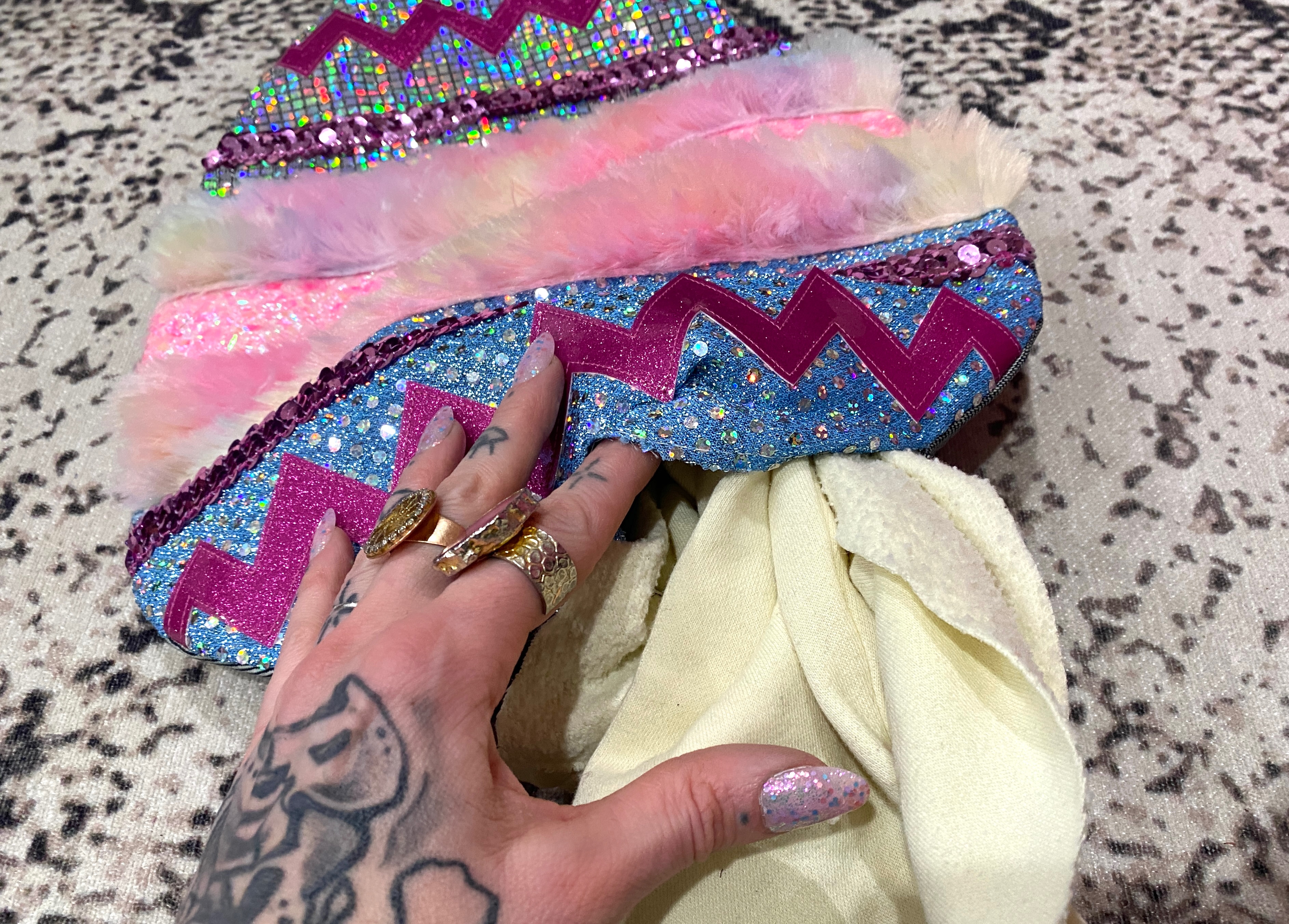 I have been saving fabric remnants from past projects, so I made sure to use only the soft material remnants I had to stuff the egg. I make sure to stuff it really well:)
I have been saving fabric remnants from past projects, so I made sure to use only the soft material remnants I had to stuff the egg. I make sure to stuff it really well:)
For your final step, you’ll need to close up the 4″ seam through which you flipped your egg right side out. I opted for this Mettler denim thread, which I love for its durability and quality. However, any heavier-weight fabric is preferred.
My favorite hand stitch for this is the invisible stitch. Simply thread a needle with matching thread, bring it up through the folded edge to hide the knot, then take small stitches back and forth across the seam, pulling the thread tight. As you stitch, go back and forth in the same spot on each side, creating a small 1/4″ tunnel inside to the next stitch spot. This stitch creates a nearly invisible seam. There are also plenty of tutorials you can find for more detailed guidance:)
You did it! Your “Remnant Eco Easter Egg Pillow” is complete! I hope you enjoyed this tutorial and found it useful for utilizing your fabric remnants. Not only is this a creative project, but it’s also a fantastic way to contribute positively to the environment by repurposing materials you already have on hand. Thank you for joining me on this eco-friendly crafting journey!
- Difficulty level
- Beginner
- Time to Complete
- 2 Hours
- Used Material
- coordinating thread, fabric remnants
- Projects
- pillow
- Seasons
- Easter, Spring
- Techniques
- sewing
